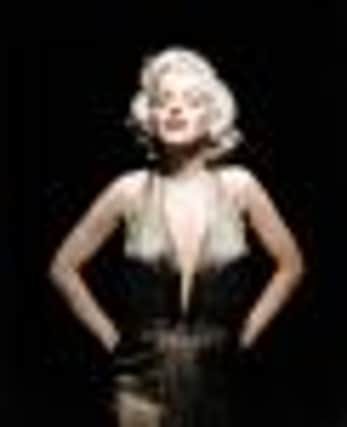The magic and mystery of Marilyn the Hollywood icon


IN the last interview Marilyn Monroe gave before her death, she said: “I never quite understood it, this sex symbol. I always thought symbols were those things you clash together. That’s the trouble, a sex symbol becomes a thing.”
It’s a telling quote, revealing her sense of humour as well as her frustration at becoming a fantasy figure.
Advertisement
Hide AdAdvertisement
Hide AdOn August 5, 1962, she would finally escape from having to live with the blonde bombshell image she’d helped create and in doing so became a Hollywood icon, doomed to be forever young like James Dean before her. Had she lived she would be 86 today, and this weekend marks the 50th anniversary of her death.
But although Monroe felt stifled by her image, she wasn’t the first sex symbol, as the Yorkshire Post’s film critic Tony Earnshaw points out. “People like Ava Gardner and Lizabeth Scott came before her. But what she did was convince people that there was value in being a ditzy blonde. She was seen as the ultimate trophy and became the embodiment of the dumb blonde. But she was rather smarter than that, Arthur Miller would never have married the quintessential dumb blonde,” he says.
Monroe worked with some great directors, including John Huston and Billy Wilder, during her short career. “A lot of them found her difficult and troubled, a woman lacking in confidence but someone who could also deliver a performance.”
Earnshaw believes it’s Monroe’s iconic status that fascinates people. “They remember the wide-eyed ditzy blonde and they remember the occasional classic line but I think Marilyn Monroe, more than any other film star or rock star, personified this iconography. She will never get old, she will never fade and she’ll never get wrinkles. She’s caught in amber, trapped in time.”
Advertisement
Hide AdAdvertisement
Hide AdBut beyond her iconic image, do we know who she really was? Lois Banner, author of Marilyn: The Passion & The Paradox, and a professor of history and gender studies at the University of Southern California, attempts to provide some answers.
Born Norma Jeane Mortenson on June 1, 1926, Marilyn’s childhood reads like a Dickensian novel. Her father’s identity is unknown while her mother Gladys, a lowly negative film cutter, suffered from depression and panic attacks and put Norma Jeane into a foster home soon after she was born.
Her mother took her back but was diagnosed with paranoid schizophrenia and committed to a mental institution, and according to Banner, between 1935 and 1942 Monroe was shunted between 10 foster homes as well as a year spent a year in an orphanage. She was sexually abused twice, experiences which would impact greatly on her personality. To cope with her traumatic childhood, the young Norma Jeane fantasised about becoming a famous film star. “She decided she wanted to conquer the world,” says Banner. “She thought it would make her happy if she had ultimate power, and it really didn’t.”
In the 1940s, she was spotted at work in a factory by an army photographer and signed to an agency, dying her hair blonde to fit their requirements. Not long afterwards she was scouted by an executive from 20th Century Fox, given the name Marilyn Monroe and signed her first acting contract in 1946.
Advertisement
Hide AdAdvertisement
Hide AdIn the next decade, she would star in classics including Gentleman Prefer Blondes, Some Like It Hot and The Seven Year Itch. But Banner says Marilyn wasn’t a product of Hollywood. “There were people behind it, but even the head of publicity at 20th Century Fox says that Marilyn did most of it herself. She was very smart, shrewd and had natural wit. People think the studios gave her all those funny lines, but no, she made most of them up.”
The following year, she came to England to make The Prince And The Showgirl, directed by and starring Laurence Olivier. She famously argued with Olivier, was fed drugs to keep her going and finally had therapy with Anna Freud. “It’s a wonder she finished that film,” Banner says.
Her personal life was fraught and she married three times, including to baseball star Joe DiMaggio and playwright Arthur Miller. But even in death she hasn’t been allowed to rest in peace, as conspiracy theories abound over her fatal overdose.
“I don’t think people really want to know what happened, they want to keep puzzling over the mystery,” says Banner.
“All we have of her is an image of beauty, she’s an Aphrodite of the modern era. I think we’re only beginning to realise about her complexity.”